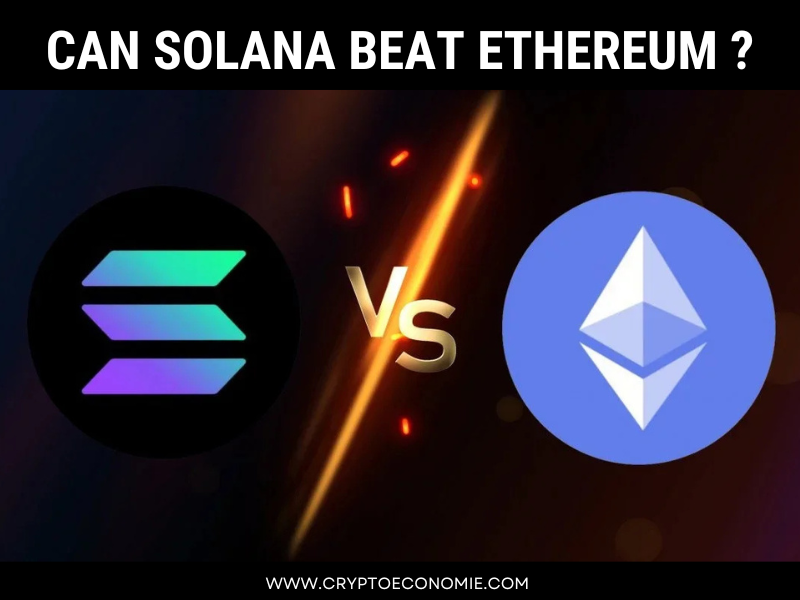what is Roadmaps in Crypto: A simple Guide

Discover what crypto roadmap are in this simple guide. Learn how they shape projects and keep you informed. Start understanding today!
As we venture into the ever-evolving and often perplexing realm of cryptocurrencies, we frequently come across the term "roadmap" associated with various projects. But what does a roadmap mean in this context?
What does it encompass, and perhaps more importantly, why is a clearly defined roadmap vital for any project aiming for success and sustainability in the crypto landscape?
In a domain filled with decentralized finance (DeFi), NFTs, and blockchain advancements, grasping the concept of a roadmap is essential for making informed investment decisions and comprehending a project's strategic trajectory.
In this in-depth analysis, we will explore the structure of a crypto roadmap. We will look into its purpose, how it serves as a guiding framework, and the different types that exist.
Additionally, we will evaluate the pros and cons of depending on roadmaps, concluding with a practical example that reinforces our understanding of this crucial element in blockchain projects.
What is a Roadmap in Crypto?
At its essence, a roadmap in the cryptocurrency sector is a strategic and visual outline. It effectively conveys the project's vision, objectives, and significant milestones it aims to reach within a specified timeframe. You can think of it as a comprehensive itinerary for a journey, where the destination is the realization of the project's goals.
This roadmap acts as a key reference point, serving as a detailed guide for developers regarding tasks and deadlines, allowing investors to monitor the project's advancement, and setting expectations for the community about future developments.
Roadmaps hold particular importance in the crypto landscape, where trust and transparency are crucial. A well-defined roadmap illustrates a project's intentions, its dedication to fulfilling its commitments, and its awareness of the challenges and opportunities it encounters. In an industry often marked by volatility, hype, and regulatory ambiguity, a clear and pragmatic roadmap is essential.
How Does a Roadmap Work?
A roadmap functions as a project management tool, helping to organize and track progress. It's not just a static document; it's a living plan that should be regularly reviewed and potentially adjusted as circumstances change. Here's a more detailed breakdown of its key functions:
Vision and Goals: The foundational step involves the project team defining its overarching vision – what problem are they solving, and what impact do they hope to create?
Then, they need to set specific, measurable, achievable, relevant, and time-bound (SMART) goals.
This is not just "we want to be successful" but "we want to process X transactions per second within Y months using Z technology."
Timeline: A clearly defined timeline is crucial. This outlines when the project aims to achieve specific goals, typically broken down into short-term (e.g., quarterly), medium-term (e.g., yearly), and long-term (e.g., 3-5 years) objectives. It's beneficial to indicate starting and ending dates for each
specific task on the roadmap
Milestones: Milestones are significant checkpoints or events that mark progress toward the project's goals.
These might include development phases (e.g., alpha release, beta testing), product launches (e.g., mobile app release, new feature implementation), major updates (e.g., protocol upgrades, security audits), key partnerships, or exchange listings. Each milestone should be clearly defined and measurable.
Resource Allocation: While not always explicitly detailed, a good roadmap will implicitly suggest how resources (e.g., development team, marketing budget) will be allocated to achieve each milestone.
Community Engagement: Roadmaps should encourage community participation and feedback. This fosters a sense of ownership and allows the project team to gather valuable insights from users and stakeholders. Regular updates, AMAs (Ask Me Anything sessions), and open communication channels are essential.
Flexibility and Adaptability: The Crypto space is incredibly dynamic. Successful projects build flexibility into their road maps to account for potential obstacles and changes in the market. While having direction is necessary, rigid adherence to the roadmap may harm the project.
Let’s illustrate this with a simple example. Imagine a new blockchain project called "GreenCoin," aimed at promoting eco-friendly initiatives. Their roadmap might include the following:
Q1 2024:
Finalize and launch the GreenCoin whitepaper. (Includes technical specifications, tokenomics, and the project's long-term vision.)
Begin preliminary development of the GreenCoin wallet (Research the frameworks to build the wallet, and decide which will be the most suitable)
Q2 2024: Begin the Development of the GreenCoin wallet for easy transactions.
Alpha testing of the GreenCoin wallet with a closed group of testers. (Gather feedback and fix bugs.)
Q3 2024:
Announce partnerships with at least three environmental organizations. (Collaborate on awareness campaigns and integrate GreenCoin into their fundraising efforts.)
Begin community building through social media campaigns
Q4 2024:
Launch the GreenCoin token and seek initial exchange listings. (Target smaller, reputable exchanges initially.)
Open the GreenCoin wallet to public beta testing
This slightly more granular roadmap provides investors and the community with a more detailed view of the project's plans. It helps them understand the project's priorities and assess the likelihood of success. This level of detail cultivates greater trust and engagement within the community.
Types of Roadmaps
The cryptocurrency landscape is incredibly diverse; projects vary greatly in their focus and goals. Correspondingly, roadmaps can take different forms, each emphasizing specific aspects of the project's development:
Product Roadmap: This type is heavily focused on the development and release of specific products or features. It prioritizes technical milestones, user experience (UX) improvements, and the evolution of the project's core technology. Examples include wallet updates, mobile app releases, new DeFi protocols, or NFT marketplace features.
Marketing Roadmap: Centered on building brand awareness, community engagement, and user acquisition. This roadmap outlines marketing strategies, outreach efforts, planned partnerships with key opinion leaders (KOLs), advertising campaigns, content creation plans, and participation in industry conferences.
Financial Roadmap: Focuses on the financial aspects of the project, which includes funding rounds (seed, private, public), token sales (Initial Coin Offerings (ICOs), Initial Exchange Offerings (IEOs)), budget allocation for different departments (development, marketing, legal), and strategies for managing the project's treasury.
Technical Roadmap: A deep dive into the technical intricacies of the project. This roadmap details software development processes, protocol upgrades (e.g., moving from Proof-of-Work to Proof-of-Stake), security audits, scalability solutions, and research and development efforts.
Community Roadmap: Focuses on growing the community and ensuring they have an active role within the project. It involves community input on strategic decisions and opportunities for the community to get rewarded.
Each type of roadmap caters to the specific interests of different stakeholders within the cryptocurrency ecosystem. Developers are most interested in technical roadmaps. Investors are most interested in financial roadmaps. Users are most interested in product roadmaps.
Edit
Pros and Cons of Roadmaps
Like any tool, roadmaps come with their own set of advantages and disadvantages. Let's take a closer look at these:
Pros
Clarity and Direction: Roadmaps provide a clear path forward, helping project teams stay focused and aligned on their goals.
Increased Transparency: By sharing their plans, teams can build trust with investors and the community.
Community Engagement: Roadmaps often invite feedback from the community, fostering a sense of involvement and commitment.
Attracting Investors: A well-defined roadmap can attract investors looking for projects with a clear vision and strategy.
Cons
Inflexibility: Once a roadmap is published, it may create pressure to adhere strictly to the outlined plan, even if circumstances change. Overpromising: Teams might set ambitious goals that can lead to disappointment if not achieved on time.
Misinterpretation: Stakeholders may misinterpret roadmap milestones or timelines, leading to misunderstandings about project progress.
Market Conditions: External factors, such as market downturns or regulatory changes, can affect a project's ability to adhere to its roadmap.
Frequently Asked Questions (FAQs)
Q1: What is the purpose of a roadmap in crypto?
A1: A roadmap serves as a strategic guide that outlines a project's goals, timelines, and milestones. It helps to communicate the vision and build trust within the community and among investors.
Q2: How often should a roadmap be updated?
A2: Roadmaps should be updated regularly to reflect the project's progress and any changes in strategy. This ensures that the community is kept informed and engaged.
Q3: Can a roadmap guarantee project success?
A3: While a roadmap is a helpful tool, it does not guarantee success. External factors, team execution, and market conditions play significant roles in a project's outcome.
Q4: What should I look for in a crypto roadmap?
A4: When evaluating a crypto roadmap, look for clear goals, realistic timelines, and detailed milestones. Transparency regarding challenges and potential changes is also essential.
Conclusion
As we navigate the dynamic landscape of cryptocurrencies, understanding the importance of a roadmap is crucial for both investors and developers alike. It provides clarity, fosters trust, and helps align expectations.
By recognizing the different types of roadmaps and weighing their pros and cons, we can make more informed decisions in this exciting but unpredictable world.
In our collective journey, we should always remember that a roadmap is not just a set of goals; it's a reflection of the vision and commitment of a project team to their community and investors. So, whether we’re exploring new investments or embarking on our own crypto ventures, let’s keep roadmaps in mind as vital tools for success.
Related News


Add a Comment
Please login to your account to post a comment.
Popular News
A Golden year for gold Could Bitcoin reach new price highs following gold lead?
2024-09-27 07:39:00
Meta $4.5 billion loss in the last 3 months. Metaverse bubble destruction domino activated?
2024-08-02 13:44:00
Important tips for the successful entry of inexperienced people into digital currencies
2024-03-14 10:32:00
TonKeeper Wallet Tutorial
comprehensive coinbase exchange review











cryptoeconomie is an independent media outlet covering the cryptocurrency industry. Its journalists adhere to a strict set of editorial policies. cryptoeconomie has adopted a set of principles aimed at ensuring the integrity, editorial independence and freedom from bias of its publications. cryptoeconomie provides essential analysis of the cryptocurrency market. Our goal is to inform, educate and share valuable information with our readers. Our editorial content is based on our passion for providing unbiased news, in-depth analysis, comprehensive cryptocurrency price charts, insightful opinions, as well as regular reporting on the social transformation that cryptocurrencies are bringing. We believe that the world of blockchain and cryptocurrencies will grow exponentially and become an integral part of our daily lives. We work every day to help educate our readers and raise awareness of the complexities and benefits offered by today’s digital revolution.
Categories
- NFT
- Defi
- Metaverse
- News
- Web3
- Crypto Exchanges News
- Stablecoins
- Altcoins
- Bitcoin
- Technologi
- Artificial Intelligence
- Crypto Learning
- Crypto Glossary
- Crypto Exchanges Training
- Ethereum
- Solana
- Regulation
- Crypto Reviews
- Centralized Exchanges
- Decentralized Exchanges
- Crypto Wallet
- Crypto Investment Training
- Trading Education
- Crypto Projects
© Copyright 2025 cryptoeconomie.com . Design by: uiCookies

























Comments